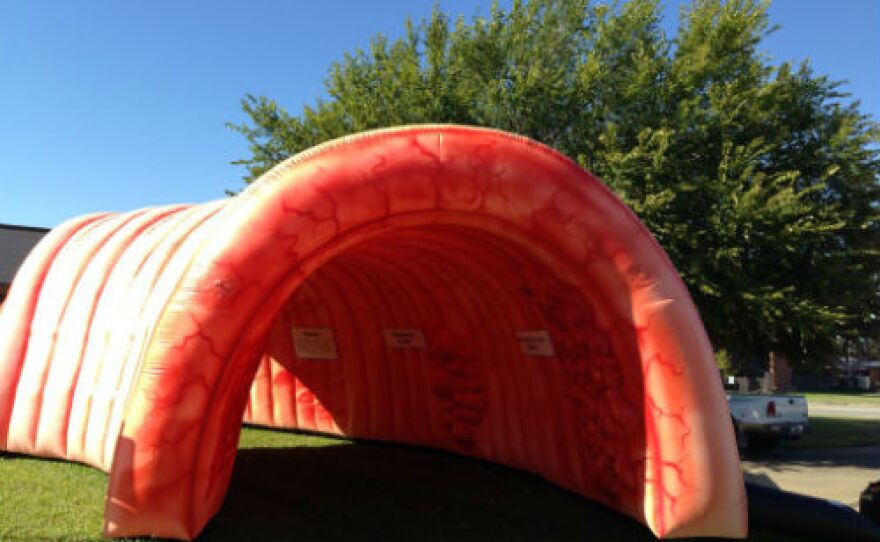In the 1966 movie Fantastic Voyage, a submarine crew is reduced to microscopic size and injected into the blood stream of an injured diplomat. The goal: to save his life.
Moviegoers were promised a stunning experience that would take them where no human or camera had ever been.
That was, of course, science fiction.
But, on Wednesday, you could take a different kind of voyage: a trip through a giant inflatable replica of a human colon -- 20 feet long, 12 feet high.
The larger-than-life colon was on display at the JPS Center for Cancer Care in Fort Worth.
Celeste Caliman, a nurse and clinical research coordinator for clinical trials at the center, acted as a tour guide, leading the way through a huge orange-reddish tunnel that was made out of a vinyl-coated nylon.
"As you walk through, you’ll see in the beginning some normal tissue, so you can just look at it and [see] what the normal colon is supposed to look like,” Caliman said.
The lining was smooth – the sign of a healthy colon. But a little farther in, the lining got darker and looked scarred – it’s an inflamed colon due to Chron’s disease. On the opposite side, blobs larger than the size of basketballs protruded from the inside.
“On the right side of the colon, there's what a polyp would like and a polyp is essentially a precancerous cell," Caliman said. "So if the doctor does a colonoscopy and they find a polyp, they take it out and they send it to pathology to be biopsied to see if it's benign or malignant."
Keep walking and you see a cluster of polyps. Not a good sign.
"That tells me that that cell has kind of gone out of control and became a malignant polyp as opposed to a benign polyp,” Caliman said.
Next, there was a larger cluster, which represented colon cancer. And finally, intertwined tissue stuck out – that’s advanced colon cancer.
Colon cancer is not rare. About one in 20 Americans will be diagnosed with the disease during their lifetime. It's also the second leading cause of cancer-related deaths in the U.S.
Caliman said being pro-active is crucial.
“As the sign says, early detection is the best, is the key," she said. "Because the sooner you catch it, the less invasive the procedure that needs to be done has to be done.”
The exhibit travels all over the country and is provided by the Colon Cancer Alliance in D.C. It's on loan from Bayer HealthCare and will travel next to Austin for the Livestrong Challenge Oct. 18-20.
The voyage through a colon might not be as magical as Fantastic Voyage, but like a colonoscopy, it’s worth taking.
http://www.youtube.com/watch?v=dLDITeurAPI





